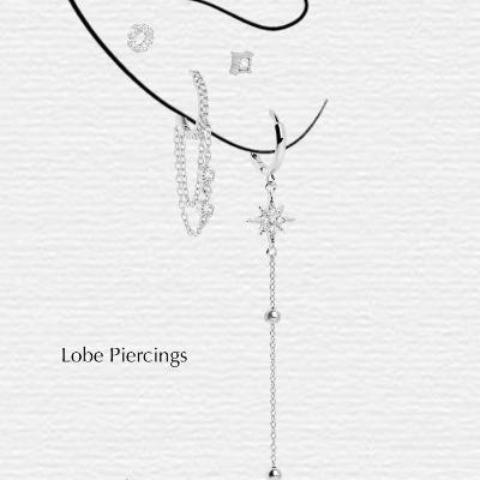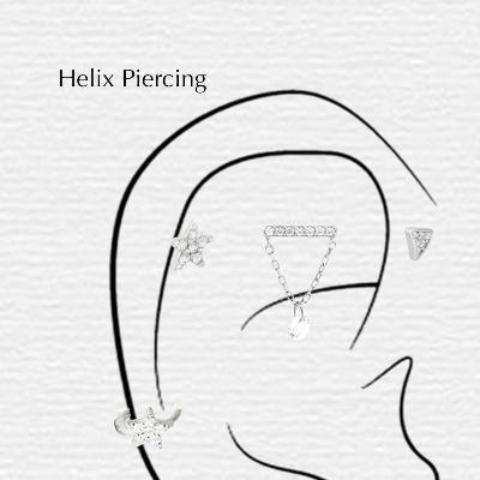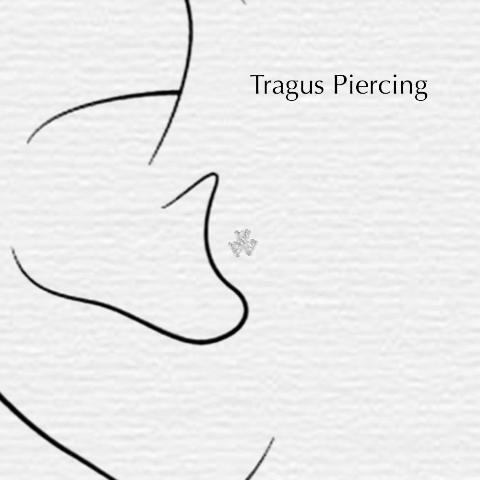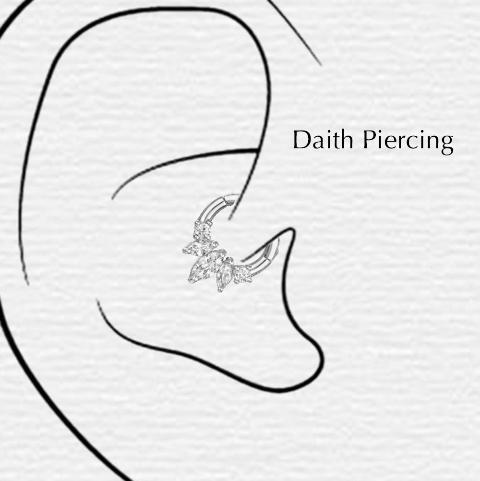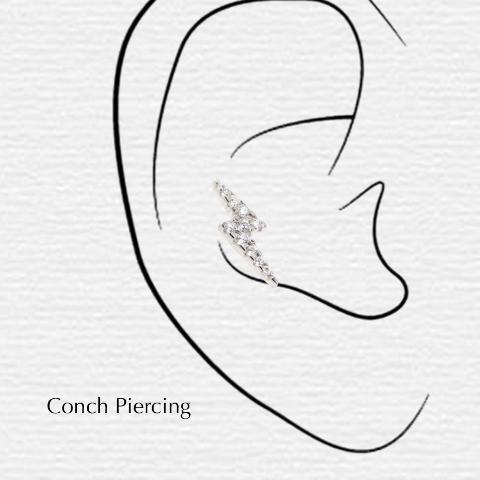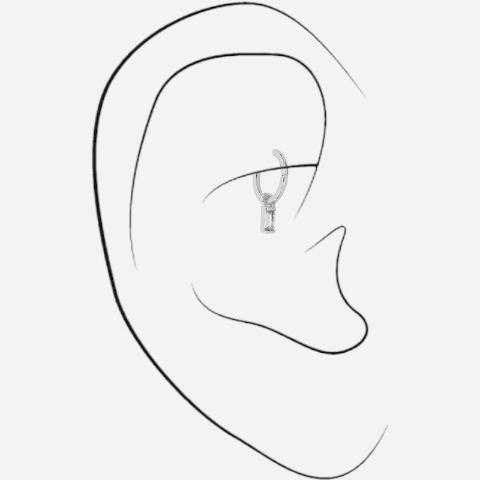Lobe Piercing: Healing Time and Care Guide
Lobe piercings are one of the most common and versatile types of ear piercings. They are generally considered to be one of the easiest and quickest piercings to heal. If you're considering getting your earlobes pierced or have just had them pierced, understanding the healing process and proper aftercare is essential. Here's a guide to help you navigate the healing period and ensure a successful and comfortable piercing experience.
Healing Time:
Compared to other types of ear piercings, lobe piercings have a relatively short healing time. On average, it takes about 6 to 8 weeks for lobe piercings to fully heal. However, keep in mind that healing times can vary from person to person depending on individual factors such as genetics, overall health, and aftercare practices.
Initial Aftercare:
After getting your lobe piercing, your piercer will provide you with specific aftercare instructions. However, here are some general guidelines to keep in mind:
1. Cleanliness: Before touching your piercing, always make sure to wash your hands thoroughly with soap and water. Keeping your hands clean minimizes the risk of introducing bacteria to the piercing site.
2. Cleaning Solution: Use a saline solution or a mild saline solution to clean your lobe piercings. You can either purchase a sterile saline solution from a reputable piercing or drugstore or make your own at home by dissolving 1/4 teaspoon of non-iodized sea salt in 8 ounces of warm distilled water. Soak a clean cotton ball or pad in the solution and gently clean the front and back of your pierced lobes.
3. Avoid Irritants: During the healing process, it's important to avoid irritants that can hinder the healing process or cause infection. Keep hair products, perfumes, and cosmetics away from the piercing area, as they can introduce bacteria or chemicals.
4. Be Gentle: Refrain from touching, twisting, or playing with the jewelry in your lobe piercings. Excessive movement can cause irritation or delay the healing process.
5. Clothing and Bedding: Choose loose-fitting clothing that won't snag or irritate your earlobes. Additionally, use clean and soft bedding materials to minimize friction and discomfort.
6. Avoid Swimming: It's best to avoid swimming in pools, hot tubs, and natural bodies of water until your lobe piercings are fully healed. These environments can harbor bacteria that may lead to infections.
Ongoing Care:
Once your lobe piercings have healed, it's important to continue practicing good care to maintain their health and prevent any potential issues. Here are some tips for ongoing care:
1. Regular Cleaning: Even after your lobe piercings have healed, it's a good idea to clean them occasionally to keep them free from buildup. You can clean your piercings once or twice a week with a saline solution or a mild soap and water mixture.
2. Jewelry Maintenance: Ensure that the jewelry in your lobe piercings remains clean and free from any debris or buildup. Gently rotate the earrings while cleaning to prevent them from sticking to the surrounding tissue.
3. Be Mindful of Sleeping Positions: Be cautious of sleeping on the side of your newly healed lobe piercings, as pressure or friction can cause discomfort or irritation. If necessary, use a travel pillow or a specialized piercing pillow to minimize contact with the piercings during sleep.
4. Jewelry Upgrades: If you plan to change the initial jewelry, wait until your piercings are fully healed to minimize the risk of infection or damage. It's advisable to seek the assistance of a professional piercer for a safe and proper jewelry swap.
5.
Check for Signs of Infection: Continuously monitor your lobe piercings for any signs of infection, such as excessive redness, swelling, pain, or discharge. If you notice any of these symptoms, it's important to seek medical attention promptly.
Remember, everyone's healing process is unique, and it's crucial to listen to your body. If you have any concerns or questions during the healing period, don't hesitate to reach out to your piercer or a medical professional for guidance and assistance.
Lobe piercings are one of the most common and versatile types of ear piercings. They are generally considered to be one of the easiest and quickest piercings to heal. If you're considering getting your earlobes pierced or have just had them pierced, understanding the healing process and proper aftercare is essential. Here's a guide to help you navigate the healing period and ensure a successful and comfortable piercing experience.
Healing Time:
Compared to other types of ear piercings, lobe piercings have a relatively short healing time. On average, it takes about 6 to 8 weeks for lobe piercings to fully heal. However, keep in mind that healing times can vary from person to person depending on individual factors such as genetics, overall health, and aftercare practices.
Initial Aftercare:
After getting your lobe piercing, your piercer will provide you with specific aftercare instructions. However, here are some general guidelines to keep in mind:
1. Cleanliness: Before touching your piercing, always make sure to wash your hands thoroughly with soap and water. Keeping your hands clean minimizes the risk of introducing bacteria to the piercing site.
2. Cleaning Solution: Use a saline solution or a mild saline solution to clean your lobe piercings. You can either purchase a sterile saline solution from a reputable piercing or drugstore or make your own at home by dissolving 1/4 teaspoon of non-iodized sea salt in 8 ounces of warm distilled water. Soak a clean cotton ball or pad in the solution and gently clean the front and back of your pierced lobes.
3. Avoid Irritants: During the healing process, it's important to avoid irritants that can hinder the healing process or cause infection. Keep hair products, perfumes, and cosmetics away from the piercing area, as they can introduce bacteria or chemicals.
4. Be Gentle: Refrain from touching, twisting, or playing with the jewelry in your lobe piercings. Excessive movement can cause irritation or delay the healing process.
5. Clothing and Bedding: Choose loose-fitting clothing that won't snag or irritate your earlobes. Additionally, use clean and soft bedding materials to minimize friction and discomfort.
6. Avoid Swimming: It's best to avoid swimming in pools, hot tubs, and natural bodies of water until your lobe piercings are fully healed. These environments can harbor bacteria that may lead to infections.
Ongoing Care:
Once your lobe piercings have healed, it's important to continue practicing good care to maintain their health and prevent any potential issues. Here are some tips for ongoing care:
1. Regular Cleaning: Even after your lobe piercings have healed, it's a good idea to clean them occasionally to keep them free from buildup. You can clean your piercings once or twice a week with a saline solution or a mild soap and water mixture.
2. Jewelry Maintenance: Ensure that the jewelry in your lobe piercings remains clean and free from any debris or buildup. Gently rotate the earrings while cleaning to prevent them from sticking to the surrounding tissue.
3. Be Mindful of Sleeping Positions: Be cautious of sleeping on the side of your newly healed lobe piercings, as pressure or friction can cause discomfort or irritation. If necessary, use a travel pillow or a specialized piercing pillow to minimize contact with the piercings during sleep.
4. Jewelry Upgrades: If you plan to change the initial jewelry, wait until your piercings are fully healed to minimize the risk of infection or damage. It's advisable to seek the assistance of a professional piercer for a safe and proper jewelry swap.
5.
Check for Signs of Infection: Continuously monitor your lobe piercings for any signs of infection, such as excessive redness, swelling, pain, or discharge. If you notice any of these symptoms, it's important to seek medical attention promptly.
Remember, everyone's healing process is unique, and it's crucial to listen to your body. If you have any concerns or questions during the healing period, don't hesitate to reach out to your piercer or a medical professional for guidance and assistance.
